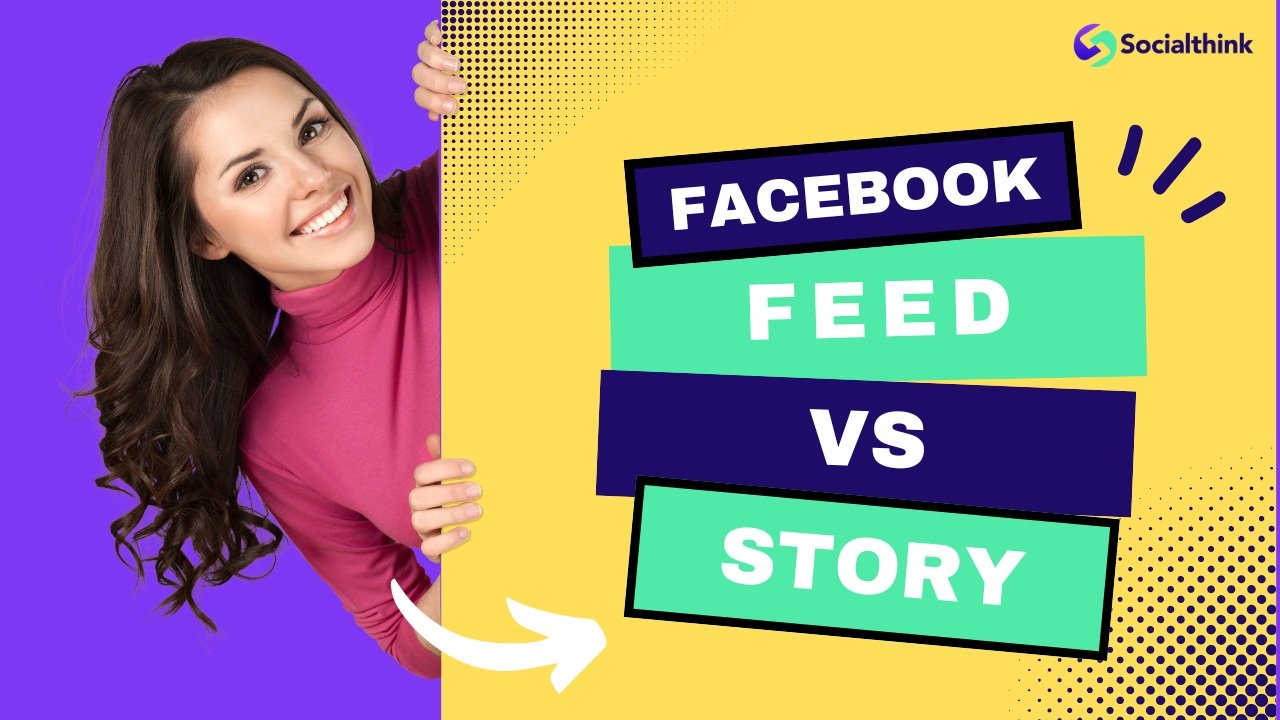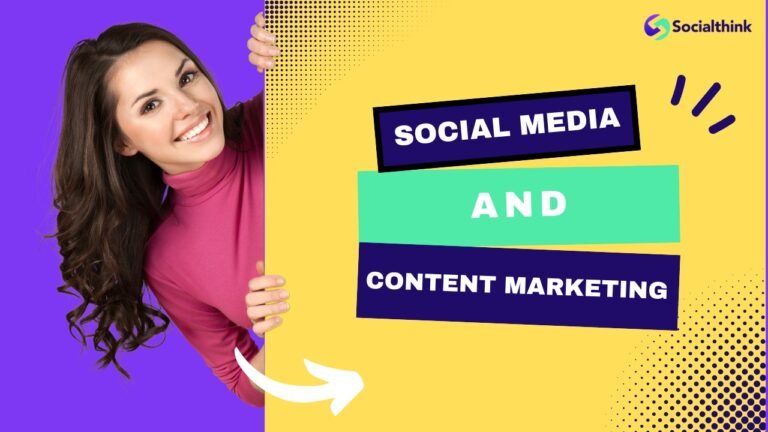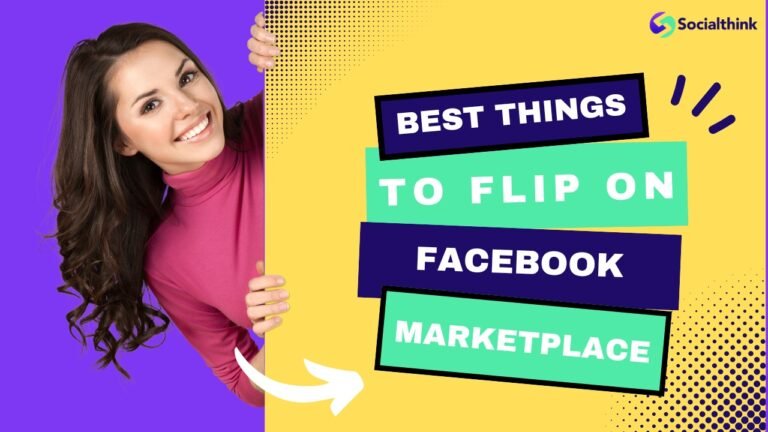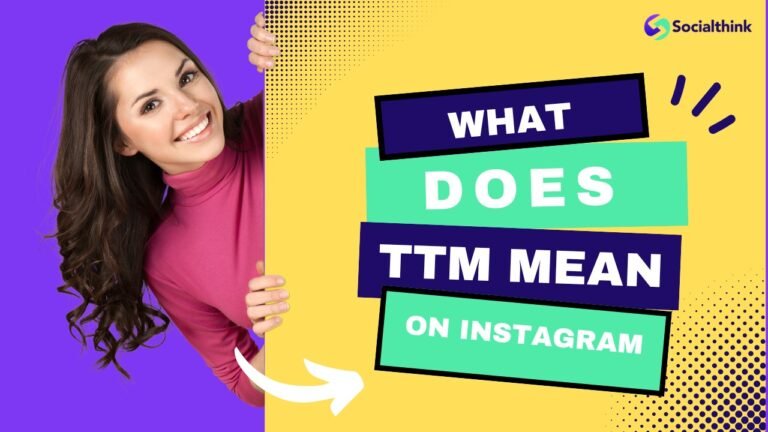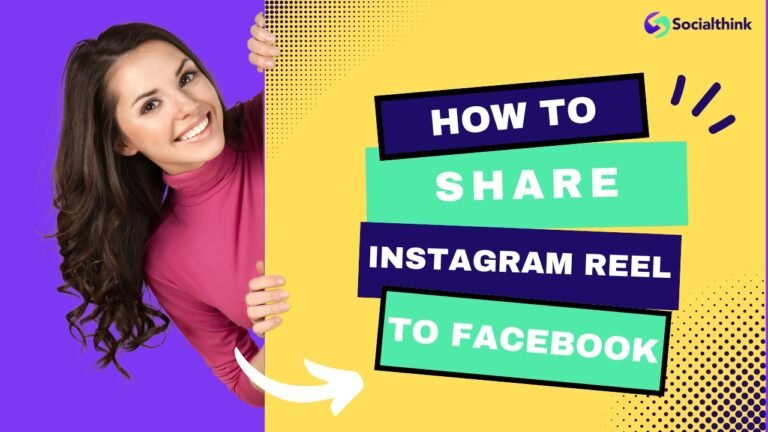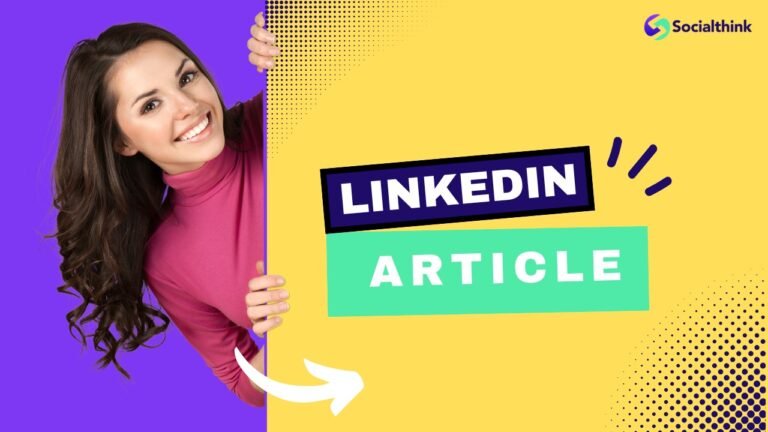Facebook Feed Vs Story: A Comprehensive Guide
In today’s fast-paced social media landscape, staying ahead of the curve is essential for businesses and marketers alike. Facebook, one of the world’s largest social media platforms, offers two distinct ways to share content: the Facebook Feed and Facebook Stories.
At Social Think, we specialize in providing actionable insights and strategies to help you navigate the complexities of social media and drive meaningful results.
In this comprehensive guide, we’ll dive deep into the differences between Facebook Feeds and Stories, empowering you to make informed decisions for your brand’s social media presence.
What is a Facebook Feed?

The Facebook Feed, also known as the Facebook News Feed, is the core functionality of Facebook and has been part of the platform since its inception. It serves as a central hub where users can scroll through a created list of posts from their friends, family, and the pages they follow. The Feed is designed to keep users engaged by presenting them with relevant and interesting content based on their interactions and preferences.
How Does the Facebook Feed Work?
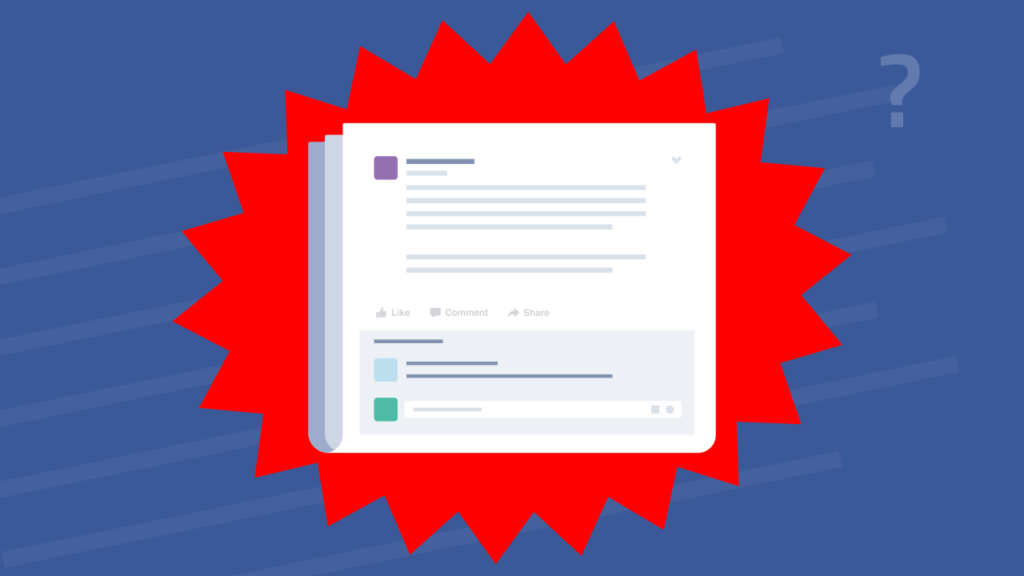
Facebook’s algorithm plays an important role in determining what content appears in a user’s Feed. The algorithm takes into account various factors, such as the user’s past interactions, the timeliness and relevance of the facebook post, and the overall engagement it receives.
By analyzing these signals, Facebook aims to deliver a personalized experience, showcasing the most meaningful content to each user.
Types of Content in the Facebook Feed
The Facebook Feed supports a wide range of content formats, including:
- Text posts
- Images and photo albums
- Videos
- Links to external websites
- Live videos
- Check-ins and location tags
- Events and invitations
This versatility allows businesses and marketers to create diverse and engaging content that resonates with their target audience.
What is a Facebook Story?
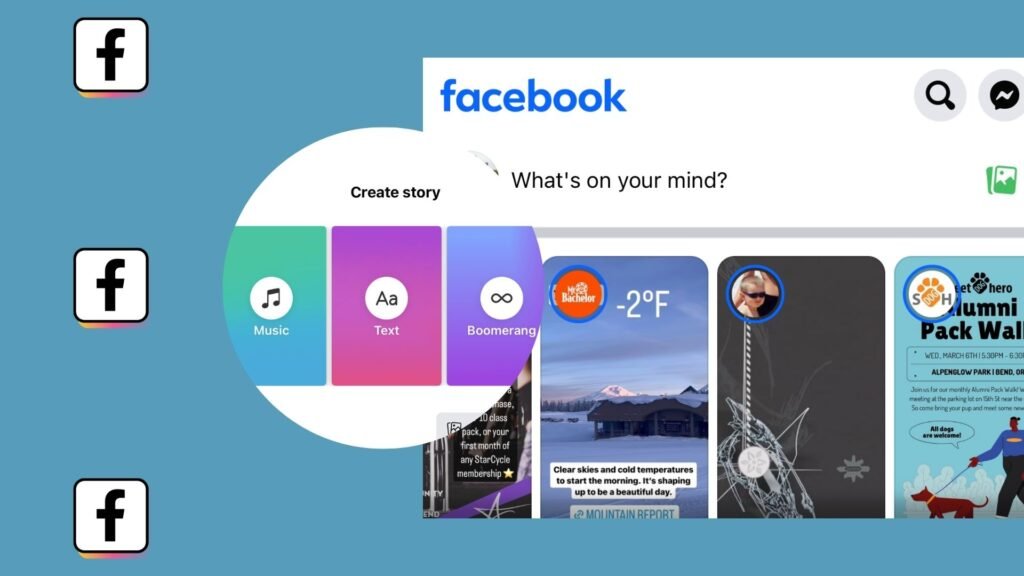
Facebook Stories, introduced in 2017, is a feature that allows users to share ephemeral content that disappears after 24 hours.
Inspired by the success of Instagram Stories and Snapchat, Facebook Stories provides a more casual and spontaneous way to share moments, updates, and behind-the-scenes glimpses with your audience.
How Do Facebook Stories Work?
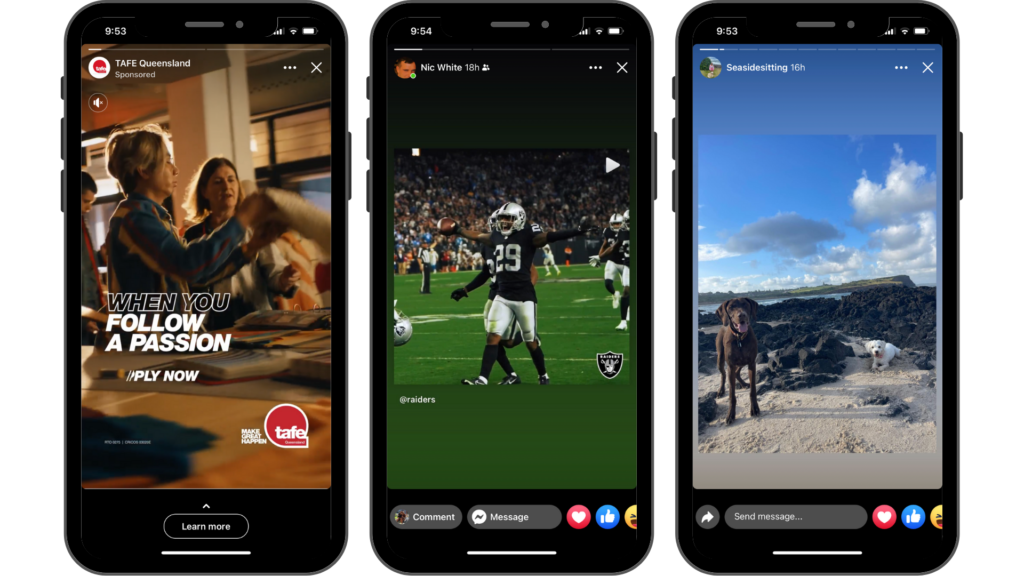
Facebook Stories appear at the top of the Facebook app and the Facebook Messenger app, making them easily accessible and discoverable. Users can view Stories section by tapping on a friend’s or page’s profile picture, which will play the Story in a full-screen format. Stories can include photos, videos, text, stickers, and interactive elements like polls and questions.
Types of Content in Facebook Stories
Facebook Stories support various types of content, including:
- Photos and videos captured directly within the Facebook app
- Uploaded images and videos from your device
- Boomerangs and other creative effects
- Text overlays and captions
- Stickers, emojis, and GIFs
- Polls and questions
- Location tags and hashtags
- Links to external websites (for verified pages)
Key Differences Between Facebook Feeds and Stories

While both provide ways to share content, Facebook Feeds and Stories are quite different.
Availability and Accessibility
Facebook Feeds are available on both the Facebook app and the desktop version, making them easily accessible to users across devices. On the other hand, Facebook Stories are primarily designed for mobile viewing and creation, with limited accessibility on desktop.
Visibility and Discoverability
Posts in the Facebook Feed have the potential to reach a wider audience, as they can appear in users’ Feeds based on the algorithm’s determination of relevance. Stories, however, are more ephemeral and require users to actively tap on a profile picture to view the content.
Content Lifespan
One of the most significant differences between Feeds and Stories is their lifespan. Feed posts remain visible indefinitely unless manually deleted by the user, allowing for long-term engagement and discoverability.
Stories, on the other hand, disappear after 24 hours, creating a sense of urgency and encouraging timely interaction.
Interaction and Engagement
Feed posts offer a range of engagement options, including likes, comments, shares, and reactions. These interactions are visible to other users, fostering a sense of community and dialogue.
Stories, while also allowing for reactions and replies, keep these interactions more private, as they are only visible to the Story creator.
Tracking and Analytics
Facebook provides detailed insights and analytics for both Feed posts and Stories. However, the metrics and data points may differ between the two formats. Feed posts offer insights into reach, engagement, clicks, and more, while Stories provide data on unique opens, forward and backward taps, and replies.
Editing Capabilities
Feed posts offer more extensive editing options, allowing users to modify the caption, tags, and other details even after publishing. Stories, once posted, cannot be edited, requiring the user to delete and re-post the Story with the necessary modifications.
Creative Options
While both Feeds and Stories support a variety of creative tools, Stories offer a more immersive and interactive experience. With features like stickers, polls, and AR filters, Stories provides a unique way to engage with your audience and encourage participation.
Audience and Privacy Settings
Feed posts can be shared with a variety of audience settings, ranging from public setting to friends-only or custom lists. Stories, by default, are visible to a user’s Facebook friends list, but privacy settings can be adjusted to limit visibility to specific individuals or lists.
Accessibility of Social media Content
Feed posts are more easily searchable and discoverable and also have a dedicated section, as they remain on a user’s timeline indefinitely. Stories, being ephemeral, are only accessible for 24 hours and are not indexed by search engines, making them less discoverable in the long run. The creator of the story can however see it after it has been removed. Users also have the story option to put their stories as story highlights to make them visible after 24 hours as well.
When to Use Facebook Feeds Vs Stories?

The choice between using Facebook Feeds or Stories depends on your content strategy and marketing goals.
Here are some scenarios where each format may be more appropriate:
Use Facebook Feeds when:
- Sharing evergreen content that remains relevant over time
- Promoting blog posts, articles, or external links
- Announcing important updates or news
- Showcasing products or services in detail
- Encouraging long-term engagement and discussion
Use Facebook Stories when:
- Sharing behind-the-scenes or exclusive content
- Creating a sense of urgency or FOMO (fear of missing out)
- Showcasing events or time-sensitive promotions
- Engaging with your audience through interactive elements like polls and questions
- Experimenting with creative formats and AR filters
Best Practices For Facebook Feeds
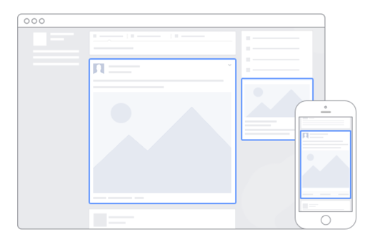
To maximize the impact of your Facebook Feed posts, consider the following best practices:
- Create compelling and relevant content: Share posts that provide value to your target audience and align with your brand’s messaging.
- Use eye-catching visuals: Include high-quality images and videos to grab users’ attention as they scroll through their Feeds.
- Optimize your post timing: Analyze your audience’s activity patterns and schedule your posts when they are most likely to be online and engaged.
- Engage with your audience: Respond to comments, answer questions, and foster a sense of community around your brand.
- Leverage Facebook Insights: Use the analytics provided by Facebook to track your posts’ performance and make data-driven decisions for future content.
Best Practices For Facebook Stories

To create effective and engaging Facebook Stories, keep these best practices in mind:
- Keep it authentic and relatable: Stories are an opportunity to showcase your brand’s personality and connect with your audience on a more personal level.
- Use interactive elements: Include polls, questions, and other interactive features to encourage user participation and gather valuable insights.
- Experiment with creative formats: Utilize the various creative tools available, such as stickers, filters, and AR effects, to make your Stories stand out.
- Maintain a consistent posting schedule: Regularly updating your Stories keeps your brand top-of-mind and encourages users to check back for new content.
- Monitor your Stories insights: Track your Stories’ performance using Facebook’s analytics to understand what resonates with your audience and optimize your content strategy accordingly.
FAQ’s:
Can I Post the Same Content On My Facebook Feed and Story?
While it’s possible to share the same content on both your Feed and Story, it’s recommended to tailor your content to each format’s unique strengths and audience expectations. Stories are typically more casual and behind-the-scenes, while Feed posts are better suited for evergreen and informative content.
Can Both Feed and Story Content Be Monetized?
Yes, both Feed posts and Stories can be monetized through Facebook’s various advertising options, such as sponsored posts, video ads, and Story ads. Advertisers can choose the format that best aligns with their campaign objectives and target audience.
How Often Should I Post On My Facebook Feed Vs Story?
The optimal posting frequency for Feeds and Stories varies depending on your industry, audience, and content strategy.
As a general rule, aim to post on your Feed 1-2 times per day and update your Story 3-5 times per week. However, it’s important to prioritize quality over quantity and maintain a consistent posting schedule.
Do Facebook Stories Get More Engagement Than Feed Posts?
Engagement rates for Stories and Feed posts can vary based on factors such as content quality, audience demographics, and posting time.
While Stories tend to have higher completion rates due to their immersive nature, Feed posts often generate more comments and shares. It’s essential to track your performance metrics and adjust your strategy accordingly.
Can I Advertise On Both Facebook Feeds and Stories?
Yes, Facebook offers advertising options for both Feeds and Stories. Advertisers can create sponsored posts that appear in users’ Feeds or develop Story ads that seamlessly integrate with the Stories format. Each ad type has its own best practices and targeting capabilities, allowing marketers to choose the most effective approach for their campaign goals.
How Can I Track the Performance Of My Facebook Feed Posts and Stories?
Facebook provides comprehensive analytics and insights for both Feed posts and Stories.
For Feed posts, you can access metrics such as reach, engagement, clicks, and reactions through the Facebook Insights dashboard.
Stories offer data on unique opens, forward and backward taps, replies, and more. Regularly monitoring these metrics helps you understand your audience’s preferences and optimize your content strategy.
Conclusion
In the ever-evolving world of social media, understanding the differences between Facebook Feeds and Stories is important for businesses and marketers looking to maximize their impact.
Leveraging the unique strengths of each format and following best practices can help you create a well-rounded and effective Facebook presence that resonates with your target audience.
At Social Think, we are dedicated to helping businesses navigate the complexities of social media and drive meaningful results. Our team of experts specializes in providing actionable insights, data-driven strategies, and comprehensive analytics to help you stay ahead of the curve.
Whether you’re looking to boost engagement, increase brand awareness, or drive conversions, Social Think is here to support you every step of the way. Visit our website to learn more about our services and how we can help you elevate your social media presence.
Stay connected with the latest social media trends, tips, and best practices by following Social Think’s website and make sure to share this post with your whatsapp and messenger friends, so they know about the differences too.
In a sea of posts and facebook profiles, let’s unlock the full potential of Facebook Feeds and Stories together to achieve your business goals and build lasting connections with your audience.

